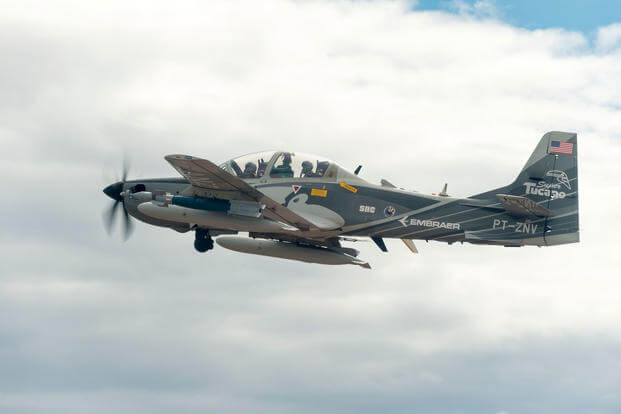The U.S. Air Force has established a new office to streamline how it procures and sustains weapons, platforms and networks.
The office, dubbed "AQ Delta" and placed under Assistant Secretary of the Air Force for Acquisition, Technology and Logistics Will Roper, is not intended to manage programs, but instead "identify things that are slowing us down and to rewire the system" in the acquisition process, said Air Force Secretary Heather Wilson.
"Delta" is incorporated into the name because it means change, she said.
Wilson revealed the new unit during a town hall at Hurlburt Field, Florida, on May 4 when an airman asked what the service is doing to better integrate systems and "break down barriers" when "money is keeping us apart" from advancing new programs.
If there are problems, a team of finance and acquisition experts would pinpoint them and "say, 'Alright, let's stop working around systems; start rewiring it,' " Wilson said.
Related content:
- Despite Shortage, Air Force Likely Won't Boost Enlisted Pilot Ranks
- SpecOps, CSAR Alignment Right if it Makes Force More Lethal: General
- New Air Force Acquisitions Chief Aims to Rid F-35 of Software Glitches
The idea replicates what Roper helped create at the highest levels at the Pentagon: the Strategic Capabilities Office, which aims to get around bureaucratic problems and more effectively advance programs in the Defense Department. The office was stood up by then-Defense Secretary Ash Carter.
Wilson has touted the Air Force's progress in improving its procurement approach, often pointing to additional acquisition authorities, rapid prototyping endeavors and even the service's "Light Attack experiment" ongoing at Holloman Air Force Base, New Mexico.
For example, the Air Force in recent budgets has received more acquisition authority from Congress to push down decisions to program officers so they can spend more time managing their designated projects "than managing the Pentagon," Wilson told lawmakers Thursday.
Extra authorities at lower levels have given the service an edge in more rapid prototyping for concepts such as the "next-generation missile warning satellites, new engines for the [B-52 Stratofortress], and hypersonic weapons," she said before the Senate Appropriations subcommittee on defense.
Accelerating how the Air Force acquires new weapons isn't the only item on the agenda; the service is rethinking maintenance as well.
Since assuming his role in February, Roper has signaled that the Air Force may be more open to competing sustainment or upgrade contracts.
The practice would allow for additional companies to compete for upgrades on current programs, which are often automatically dedicated to the firm that originated them.
"I would like to be able for a system to continually compete, replace and upgrade, all the different components," Roper said earlier this month.
Wilson endorses the idea.
"In general, competition helps to drive up performance and drive down cost, and so competition works," she told Military.com in a May 4 interview. "And it's true in military procurement just as it is in the private sector."
-- Oriana Pawlyk can be reached at oriana.pawlyk@military.com. Follow her on Twitter at @Oriana0214.










